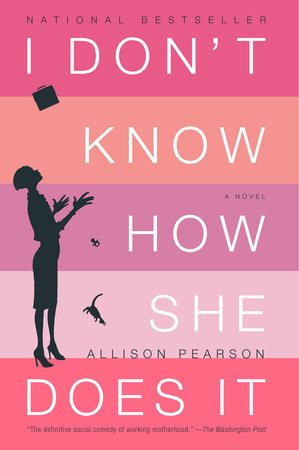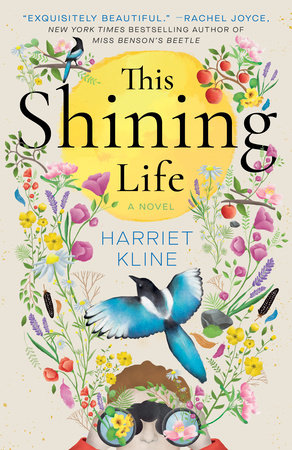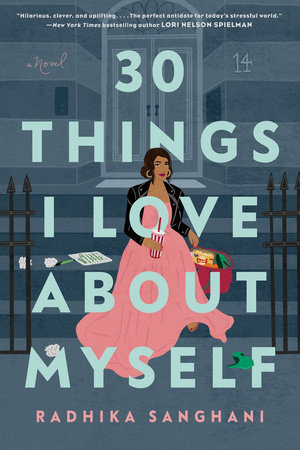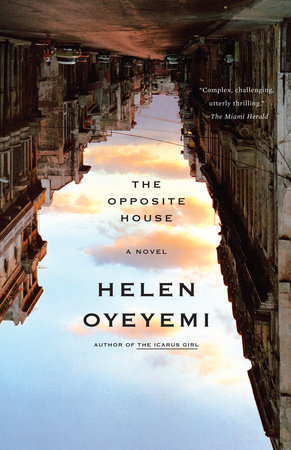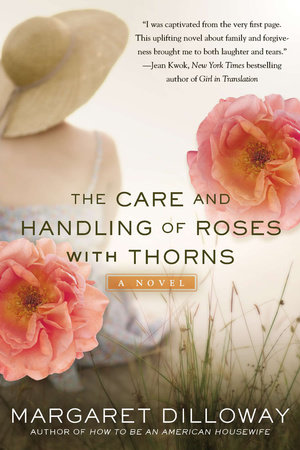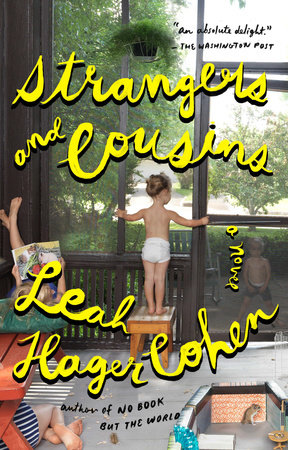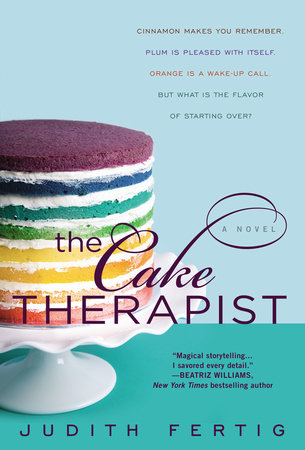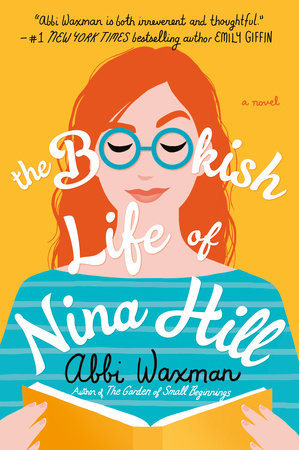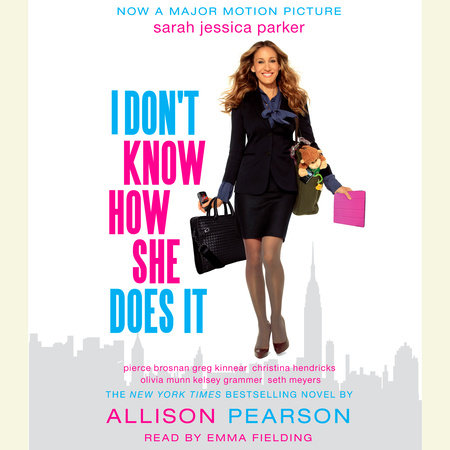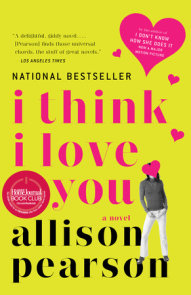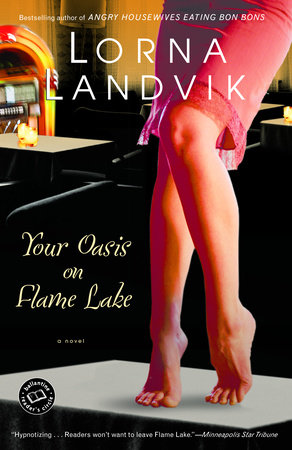Author Q&A
Q: This is your first novel. What made you decide to write it?
A: I read a Stress Survey in Good Housekeeping magazine two years ago. It said that all that most working women wanted for Mother’s Day was a bit of time to themselves. It also said they were too tired to have sex with their husbands and felt they were failing both at work and as a parent. I thought about my life and the lives of my friends with young children and I realized we were all being driven crazy by the pressure we were under juggling work and family. I thought it was a great subject – borderline farce, but full of incredibly poignant moments as you find yourself torn between responsibility to your children and the office. I wrote an article about working mothers in my opinion column in the London Evening Standard and I got literally hundreds of letters from women, all saying: That’s My Life! It felt as though I’d opened a small door onto a parallel world and on the other side was this huge amount of unacknowledged feeling.
Then, I attended a discussion on work-life balance at the London Business School and the professional women in the room started to share their stories. One lawyer stood up and said she had intercepted a memo from a senior partner in her firm which said: “Why does childbirth have to take so long?” The room erupted and I heard this dark, bitter laugh in my own head. It was Kate Reddy laughing. She didn’t have a name back then, but I knew she had a terrific sense of humour. Soon after, I began a weekly column in the London Daily Telegraph describing Kate’s adventures at work and at home. I’d like to say that I created her, but very soon she took over and wrote me, rather than me writing her!
Q: A new book about fertility and working mothers has startled American women making the cover of Time magazine this spring. (It is called, CREATING A LIFE: Professional Women and the Quest for Children by Sylvia Ann Hewlett.) Is it surprising to you that women might "miss" the chance to have children because they are so preoccupied with career-success?
A: It doesn’t surprise me at all. The mothers I interviewed when I was researching my book all said that in order to be successful in their careers, they needed to hide the fact that they had kids – one woman actually said her firm would be more forgiving if you were caught in possession of crack cocaine than children! Most of the women went to great lengths to hide the fact they had kids – never displaying photographs, never mentioning any childcare problems, always making a Man’s Excuse if they were late – ie, trouble with the car or the traffic rather than a sick baby.
Because the corporate culture is hostile to mothers who are deemed to Lack Commitment, there is no good time for a young ambitious person to have a baby so she postpones it and postpones it, always thinking it might get easier later on and it never does, and then it’s too late, which I think is a tragedy. One of the themes of I Don’t Know How She Does It is the miraculous love that babies bring with them, how they change your heart. The idea that women have missed out on that miracle because they felt that their employers wouldn’t tolerate it makes me feel incredibly sad.
Q: What do you recommend to working mothers who for financial or personal reasons want it all – to move up the corporate ladder AND have hands on care of their children?
A: I think that many mothers who work need to work – either for personal fulfillment or just to pay all those bills! But I don’t think that you can move up the corporate ladder and have hands-on care of the children – how can you? With the long hours demanded, you will be lucky if you make it home for bath – and bedtime. Most of the women I spoke to favoured some kind of flexible working where they could be home more and then work, often late into the night. I only wish that more businesses felt they could let women do that – it would be productive for all concerned. And humane too!
Q: It seems that you think that women are better at juggling or multi-tasking than men. Why do you think that is?
A: As Kate says, “Life is a road for a man, for women it’s a map.” I think we’re wired differently. If you give your husband more then three things to remember, in general, the smoke will start coming out of his ears! I guess it must be something to do with Early Woman being a gatherer – needing to go out and pick berries while keeping an ear out for the children and planning what they’re going to have for that Cave Party a week from Tuesday. Men hunted, women gathered: I think that’s why they can cut everything out except the task in hand and we find that hard.
Q: Is it possible to have two high-powered working parents in one family?
A: Well, we have two in our house, so it’s certainly possible, although definitely not easy! There are times when you are both insanely busy and the household is pushed to snapping point. It’s usually over something small, like why didn’t someone else notice we were out of kitchen towel or loo paper? What you need is really good childcare. As many of us now live far from our families, we can’t call on that great network of grandmas and aunts that would feel so much better than handing over your baby to a comparative stranger. I believe there comes a point when one person – it’s usually the woman – has to scale back her commitments. Not being able to make a home because there’s no time can feel frustrating and painful. You want to do it as well as your own Mum did!
Q: After all these years of a "women’s movement," and the implementation of laws regarding sexual harassment, do you think workplaces are still sexist environments?
A: Obviously, things are much better than they were, but Kate Reddy’s world – the financial sector – has been slower to change than most. During my research, the women who were helping me on some of the guys emails that come out of these places – they were so specific they’d make a gynecologist want to go and lie down.
What I really think is that women were allowed into the workplace, but the workplace never stopped being male. The long-hours culture is male (women want to get home), the dick-swinging meetings culture is male (for men meetings are arenas of display, women want to make a quick decision and get on with their work), the politicking and oiling up to senior colleagues is male (most women don’t have the stomach for it). One banker I spoke too said, “If the office was full of estrogen instead of testosterone, you’d see a huge and beneficial change.”
Q: Kate Reddy feels fiercely competitive with the stay-at-home moms who she fears judge her for not being a good enough mother. You’ve observed a very real tension of modern day life – this competition/anxiety that makes working moms and stay-at-home moms view each other warily. Which group judges the other more harshly do you think?
A: I think it’s very complicated. As a working mother, I often look at stay-home Mums with a mixture of envy and anxiety – are they judging me for not being with my kids full-time? Then again, I have friends who have given up work and they look with envy and anxiety at people like me who get to leave the house and wear clean clothes and even, sometimes, sleep on their own in a hotel bed for a full 12 uninterrupted hours! In the book, Kate calls the stay-at-home women the Mothers Superior and classes herself a Mother Inferior, which is how I personally feel a lot of the time. I don’t think working mothers judge the stay-home mothers – they know they’ve made the big sacrifice to be with their kids – but I think some judging may go on the other way round.
Q: The enthusiasm for your novel has been immediate and passionate – certainly here at Knopf. Tell us about sale of the novel around the world and the sale of the movie rights.
A: I always thought that Kate would get a following in the States – the situation for working mothers seems to be very similar to the one in Britain. But I was amazed to have the rights to the book purchased in 13 countries, including Japan and Israel. Maybe the theme of stress is pretty universal right now?
The movie rights were sold last summer. I was building sandcastles with the kids on a beach when my mobile phone rang and it was my film agent, Norman North, ringing to say that Miramax had made an offer we couldn’t refuse. It was incredibly exciting, but then Thomas – he’s my youngest and was then nearly two, came over and celebrated Mummy’s major movie deal by depositing an ice-cream in my lap. I thought it was such a Kate moment!
Q: How did you find time to write this novel? Did it take a long time to write?
A: Being a mother of two small children and trying to write a novel is hell – like having a secret third child in the house that you have to go and play with when the other two have gone to bed. It took me a year; the first half when I was doing my other jobs, and then four months flat out at the end. I found the time by working till 1 a.m., then getting up at 5 a.m. and putting in a couple of hours till Evie and Tom woke up. Then, I’d get them ready for the day and return to the computer. By the end Evie – she’s six – was standing next to the computer saying, “Have you finished your book yet, Mum? Please have you finished your book?” The irony of a stressed-out working mother writing a novel about a stressed-out working mother was hard to bear at times. I think I lost about six months of their lives to create Kate Reddy.
My only hope is that the novel stirs up some discussion so that life will be very different for Evie and her female friends when they get to working age. The novel is dedicated to her – it’s my way of saying, “This is how your mother’s generation had to live and never think I didn’t love you.”
Q: Everyone at Knopf (with special emphasis on the moms here) is comparing notes on "Kate Reddy moments." As the creator of the concept, could you give us some of your "personal best?"
A: There are so many, but one disaster stands out. As a journalist, I had to go and interview Tom Hanks at the Dorchester. It was not long after my daughter was born, and when I held out my hand to shake the movie stars I realized I had this kind of epaulette of banana sick on my black jacket. When you have a baby or little kids, it’s a constant battle to keep your work clothes clean, so I identify totally with all of Kate’s embarrassments in this area. Luckily, Tom Hanks was so nice and had kids of his own, that he said, “Oh, don’t worry, this happens all the time.” Which was incredibly sweet, but clearly untrue: not too many people go to meet him covered in regurgitated breakfast!
Some of the moments are not that funny. I went to Los Angeles for almost a week on a job and ended up sitting in a hotel while I was messed around by some very arrogant PR people. Every night, I called my husband and he told me that six-month-old Thomas was “a little under the weather.” When I finally got home, I walked into the kitchen and I realized immediately that the baby had been ill. I picked him up and he gave me such a wonderful smile– he was so happy to see me – but he had lost so much weight. It turned out, he had tonsillitis and Anthony hadn’t wanted to worry me. I was so incredibly upset. I stood there and wept and all the time the baby was laughing and smiling, just delighted to have his Mummy back. I hated the fact that I’d wasted my time with those worthless vain Hollywood people when my baby boy was ill. That was the worst moment.
